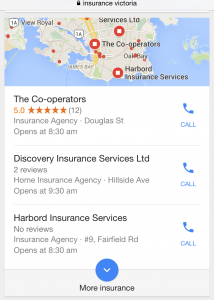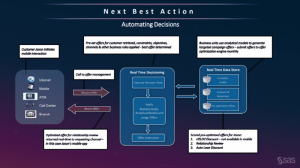The global viral pandemic has flipped the script for multiple industries; airlines, banks, high-street stores, and manufacturers have been forced to close shop. As the year unfolds, it has had a detrimental impact on the economy and many businesses are suffering.
A recent survey conducted by Orbit Media shows how the coronavirus pandemic has impacted the marketing industry. Thirty-seven percent of surveyed agencies report a slightly negative impact on their services due to COVID-19. The same data shows agencies reporting very negative (16 percent) and near-total disaster (4 percent).
The global pandemic has left many consumers being isolated, quarantined, and confined to their own homes. This has impacted consumer behavior and PPC performance, leaving many companies to shrink their marketing budgets in an effort to compensate for declining sales.
Despite the tough times, it can be wise for your company to implement a long-term strategy for your marketing efforts once the COVID-19 outbreak is over.
Let’s start with a bit of forward-thinking.
Get Your Ducks in a Row
All great wins come from strategies that were conceptualized way before the event took place. In this case, your strategies and campaigns should be mapped out prior to execution and the great news is that you can start today.
It’s not about cutting back your marketing spend but allocating your marketing resources more wisely. Marketing services that were most impacted by COVID-19 are media planning, paid search, and SEO. It’s time to start collecting customer data to get into the buyer’s mind and create a strategy based on customer behavior.
Planning is essential for getting the most out of your marketing campaigns. Understanding your audience; what they buy, where they buy from and what they’ve been spending their money on during the pandemic will help you create solutions to customer pain points.
Refine Your Messaging
How you talk to your customers is essential when marketing your products and services. Messaging is all about what you’re trying to convey and how you’re trying to convey it. Whether you do this via website copy, emails, video, social media posts, or offline channels; it’s essential that you get this right.
Research about the impact of COVID-19 on large organizations shows that companies are adapting to engage consumers in new ways. Forty-nine percent of surveyed organizations have innovated marketing messaging and branding. The data also shows that they’re highly like to take their new approaches into post-outbreak.
There’s no reason those small businesses can’t refine their messaging to create a customer-centric model. Not all of your website and ad copy are going to hold relevance following the viral outbreak, so it’s important to remove anything that may come across as insensitive.
Keep an eye on your competitors, they can be your biggest assets when it comes to developing solid strategies. Monitor which channels your competitors are pushing their marketing efforts; discover what their message is and if they’re pushing any promotions. This is also a great opportunity to cross-reference your unique value proposition with your competitors and base your messaging around that.
Don’t Overlook SEO
Despite the statistics showing that marketing spend on SEO has declined, it’s a bad move from B2B and B2C companies. There’s been a huge shift in what consumers buy and how they buy it. Let’s take a look at food for example, in the United States community-supported agriculture is up by 157 percent.
Back to food (again), there’s a rising interest in Thai (55 percent), pizza, (53 percent) and fast food which is also up by 53 percent. On a B2C level, small businesses should focus on elements like local SEO to drive local customers towards their website so they can order line. Whether you use a service like DoorDash or Seamless, local SEO will still boost your visibility to local customers. When coronavirus is over, this will also drive traffic through their doors.
It doesn’t just apply to restaurants, fitness equipment is up by 162 percent because people are confined to working out in their own homes. Translating this into post-coronavirus marketing is simply a case of applying local SEO marketing campaigns.
I’ve talked about two industries but how can most small businesses get ahead with their marketing after COVID-19? Make sure that your website is up to scratch and you’re taking advantage of all the tools available to you. That means keywords, local directory listings, metatags, website architecture and mobile-friendly websites.
Outsource Your Content
For some reason, in-house content is considered as better than hiring a freelancer or two to create a deliverable that would normally be done in an office. Well, during quarantine, practically everything has been created “in-house”.
Content assets range from graphics, ads, social media posts, and website content. A lot of those factors will contribute towards your search engine rankings which increases the number of website visitors you’ll have.
Outsourcing your content creation can drastically reduce your marketing budget, allowing you to distribute funds elsewhere. Outsourced workers and teleworkers have proven to be more productive, show higher levels of innovation, and collaborate more.
That means you get higher quality content, at a lower cost and outsourced workers perform better — what’s not to love.
During the viral outbreak, top of the funnel content creation can be at a minimum, as long as your customers know you’re still in business. You can use this time to provide value through blog posts and social media posts. Following COVID-19, outsource your content creation to lower costs and leverage customer data to create tailored ads and content marketing campaigns that convert.
Conclusion
The coronavirus pandemic is a trying time for large organizations, small businesses, and consumers. The most important aspect to remember is how will your customers change following the viral outbreak and how can your messaging reach them. Furthermore, it’s a great time to ensure that your company website is optimized with fast loading speeds, keywords, and content that reinforces your position in the market.
Business & Finance Articles on Business 2 Community
(52)
Report Post




